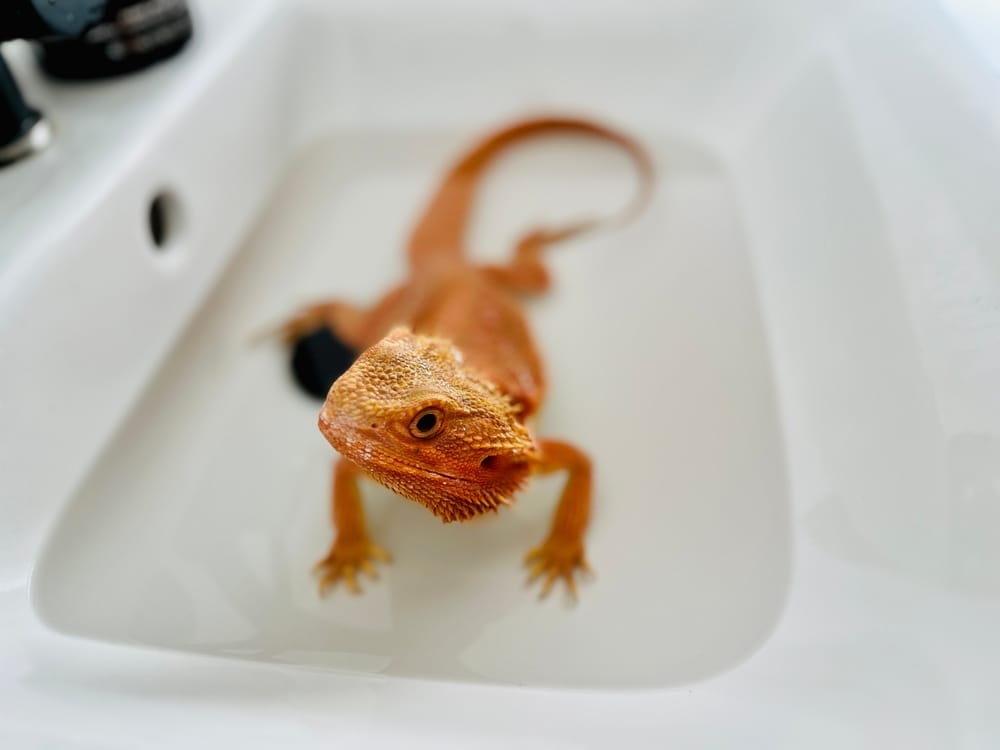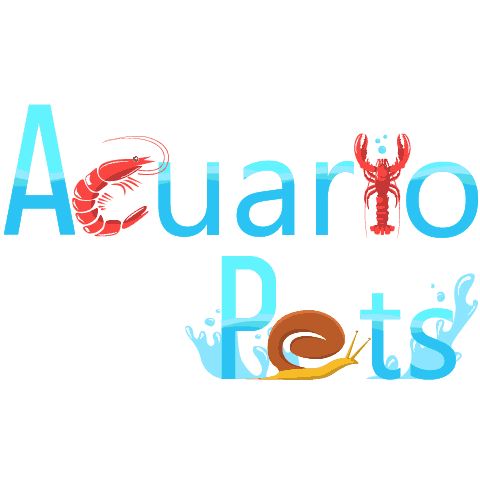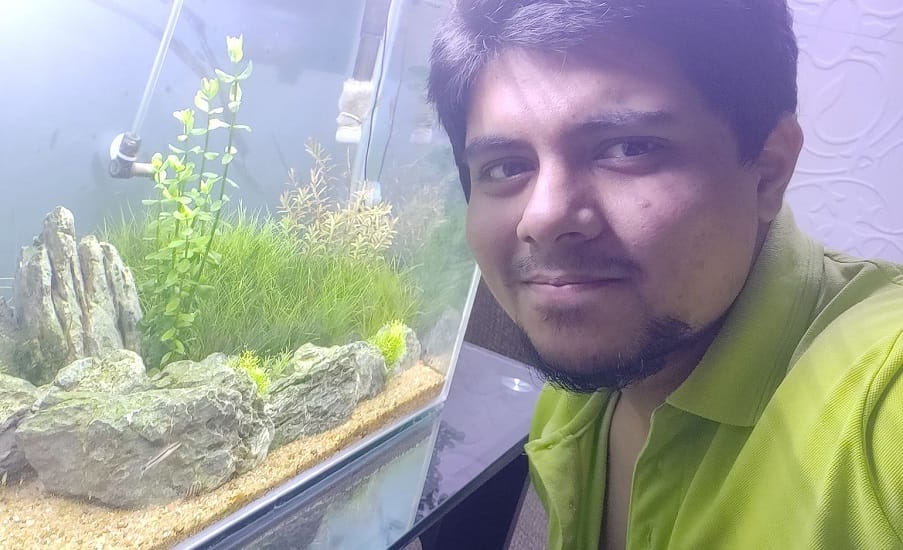This post was created with help from AI tools and carefully reviewed by a human (Muntaseer Rahman) . For more on how we use AI on this site, check out our Editorial Policy.
Check Out These FREE Tools We Made JUST For You!
The One Test Every Bearded Dragon Owner Needs to Know for Dehydration

Did you know there’s a surprisingly easy way to tell if your bearded dragon is dehydrated?
Most owners overlook this one test, but once you learn it, you’ll never be left wondering if your reptile friend is thirsty again.
It’s fast, it’s foolproof, and it could make a huge difference in your dragon’s health.

Why Hydration is Critical for Bearded Dragons?
Bearded dragons have unique needs when it comes to hydration. Even though they’re desert animals, they still need proper hydration to stay healthy.
In the wild, they get most of their water from the food they eat, like veggies and insects, but in captivity, it’s easier for them to become dehydrated.
Their bodies rely on water for digestion, shedding, and overall well-being. Without enough hydration, they can show signs like sunken eyes, lethargy, or even issues with passing waste.
Since they don’t always recognize still water in a bowl, it’s important for owners to get creative by offering water-rich foods or misting them to encourage drinking. Understanding these needs helps keep your dragon happy and hydrated.

Common Signs of Dehydration In Bearded Dragons
Bearded dragons show several signs when they aren’t getting enough water. As a responsible owner, it’s important to know what to look for so you can act fast.
Sunken Eyes
One of the clearest signs is sunken or hollow-looking eyes. It can be scary to see, especially if your dragon usually looks bright and alert. I remember the first time I noticed this with my dragon, Spike. His eyes looked like they had sunk into his head, and I panicked. I didn’t realize at first that it was due to dehydration.
Lethargy
Another sign is when your dragon becomes unusually lazy or inactive. Dehydration makes them feel sluggish, so they might spend more time hiding or laying still. When Spike went through a bout of dehydration, he barely moved from his favorite corner for days. I thought he was just being lazy, but it turned out he was dehydrated.
Dry, Flaky Skin
Dehydration can also show up in their skin. You might see dry, flaky skin, or even cracks if it’s really bad. This becomes even more noticeable during shedding. I remember thinking Spike’s shedding was just taking longer than normal, but then I realized his skin was unusually dry. A quick bath helped, but it was a clear sign he needed more hydration.
Hard Urates
Healthy bearded dragon poop includes something called urates—that’s the white part of their droppings. Normally, it should be soft. But if your dragon is dehydrated, the urates will be hard and chalky. I noticed this once with Spike, and it was a huge wake-up call. His poop was dry and didn’t look right, so I immediately started offering him more water and misting his enclosure.
Loss of Appetite
Bearded dragons that are dehydrated often stop eating. When Spike refused his favorite crickets for a few days, I knew something was off. A drop in appetite is common when they’re not feeling well, and it can definitely be related to dehydration.
Constipation
If your dragon is having trouble passing stool, it could be because of dehydration. They need enough moisture for their digestion to work properly. After noticing that Spike was struggling with constipation, I gave him more baths, and it helped soften things up, literally.
Decreased Skin Elasticity
The pinch test is a simple way to check if your dragon is dehydrated. Gently pinch the skin on their back, and if it doesn’t snap back quickly, they need more water. I do this test on Spike regularly now, just to be sure. One time his skin took longer to go back, and that was when I knew I had to step up his hydration.
Behavioral Changes
Lastly, keep an eye on their behavior. A dehydrated bearded dragon might get cranky or stressed more easily. Spike, usually calm, became a bit aggressive when he wasn’t feeling well. It didn’t click right away, but after checking the other signs, I realized he was dehydrated.


Your Beardie Has More to Say…
This article tells you WHAT to do, but do you know WHY your dragon needs it? Or what they’re thinking when you do it wrong?
Read the full rant (all 20 chapters of it) in: “What Your Bearded Dragon Wishes You Knew”
*Told by a very frustrated beardie who’s had ENOUGH of watching you guess.*
The Pinch Test: The Simple Solution Every Bearded Dragon Owner Should Know
The pinch test is a quick way to check if your bearded dragon is dehydrated. It’s really easy. All you do is gently pinch the skin on their side or back, then watch how fast it snaps back into place.
If the skin stays “tented” or goes back slowly, your dragon might be dehydrated. If it snaps back quickly, you’re good to go!
How to Perform the Pinch Test
Here’s a simple step-by-step:
- Approach Calmly: First, make sure your dragon is relaxed. I usually do this when mine is basking and calm.
- Pinch Gently: Using two fingers, pinch a small area of loose skin on their side or back. Don’t pinch too hard!
- Watch Closely: Let go and watch how fast the skin returns to normal. If it stays raised for more than a second or two, that’s a sign of dehydration.
My First Time Using the Pinch Test
The first time I used the pinch test, I was worried my dragon might be dehydrated. His skin didn’t look as plump, and he seemed more tired than usual. I gently pinched his side, and sure enough, the skin stayed raised for a bit. It was an easy way to confirm my suspicions.
After that, I gave him a shallow bath and made sure his veggies were extra moist. He perked up quickly! Since then, I’ve made the pinch test part of my routine, and it’s helped me catch dehydration early.
The best part about the pinch test is how quick and easy it is. You can do it in under a minute, and it gives you a clear sign if something’s wrong. Plus, it can save you a trip to the vet if you catch dehydration early and address it. It’s a must-know tool for any bearded dragon owner.

What to Do If Your Dragon Fails the Test
So, you’ve done the pinch test, and your bearded dragon’s skin doesn’t bounce back quickly. Don’t panic—it happens, and it’s fixable. The first time my bearded dragon, Spike, showed signs of dehydration, I freaked out a little. I had no idea he wasn’t getting enough water. But there are simple steps you can take right away.
Start by offering your dragon some water. I like to use a dropper because Spike doesn’t always drink from his bowl. You can drip some water on their snout, and they’ll often lick it up. If that doesn’t work, give them a warm bath.
I found that Spike loves soaking in a shallow dish of lukewarm water, and it helps hydrate him through his skin too.
You can also mist their tank or use a drip system to raise the humidity a bit. After I learned Spike was dehydrated, I started misting his veggies. That way, he gets some extra moisture with his meals.
Lastly, if your dragon is still sluggish or shows more serious symptoms, don’t hesitate to take them to the vet.
When I wasn’t sure about Spike’s condition, a quick vet visit gave me peace of mind, and they helped me adjust his care routine.

How to Prevent Dehydration in bearded dragon Long Term
One of the best ways to ensure your bearded dragon stays healthy is by preventing dehydration before it becomes a problem.
It’s a lot easier to manage hydration daily than to deal with the stress of trying to rehydrate a sick dragon.
Offer Fresh Veggies with High Water Content
Bearded dragons get a lot of their water from the food they eat. Including veggies like cucumbers, squash, and bell peppers can help keep them hydrated.
I started adding a few extra water-rich greens to my dragon’s salad every day, and it made a noticeable difference in his energy. It’s a simple change, but it can go a long way.
Provide a Water Bowl or Drip System
Some bearded dragons may not recognize standing water, so it’s important to offer water in ways they can understand. A shallow water dish in their tank can help.
I also noticed that my dragon responded better to a drip system where water slowly drips from a leaf or rock. It was almost like watching him play as he went to drink!
Misting and Soaking
Misting your bearded dragon or giving them a shallow bath can also help. I like to mist mine every few days, especially in the morning, to mimic dew they might find in the wild.
Some dragons love soaking in shallow water too. Mine tends to soak right after a meal, which helps with digestion and hydration.
Keep an Eye on Humidity
Even though bearded dragons come from dry environments, keeping the humidity levels in their enclosure balanced is key. Too much humidity can cause respiratory issues, but too little can lead to dehydration.
I’ve found that a small humidity gauge helps me keep everything in check without having to guess.
By sticking to these habits, you can make sure your dragon stays hydrated and happy long term!
About Author
Hello, I’m Muntaseer Rahman, the owner of AcuarioPets.com. I’m passionate about aquarium pets like shrimps, snails, crabs, and crayfish. I’ve created this website to share my expertise and help you provide better care for these amazing pets.
Disclaimer
This site is owned and operated by Muntaseer Rahman. AcuarioPets.com is a participant in the Amazon Services LLC Associates Program, an affiliate advertising program designed to provide a means for sites to earn advertising fees by advertising and linking to Amazon.com. This site also participates in other affiliate programs and is compensated for referring traffic and business to these companies.

